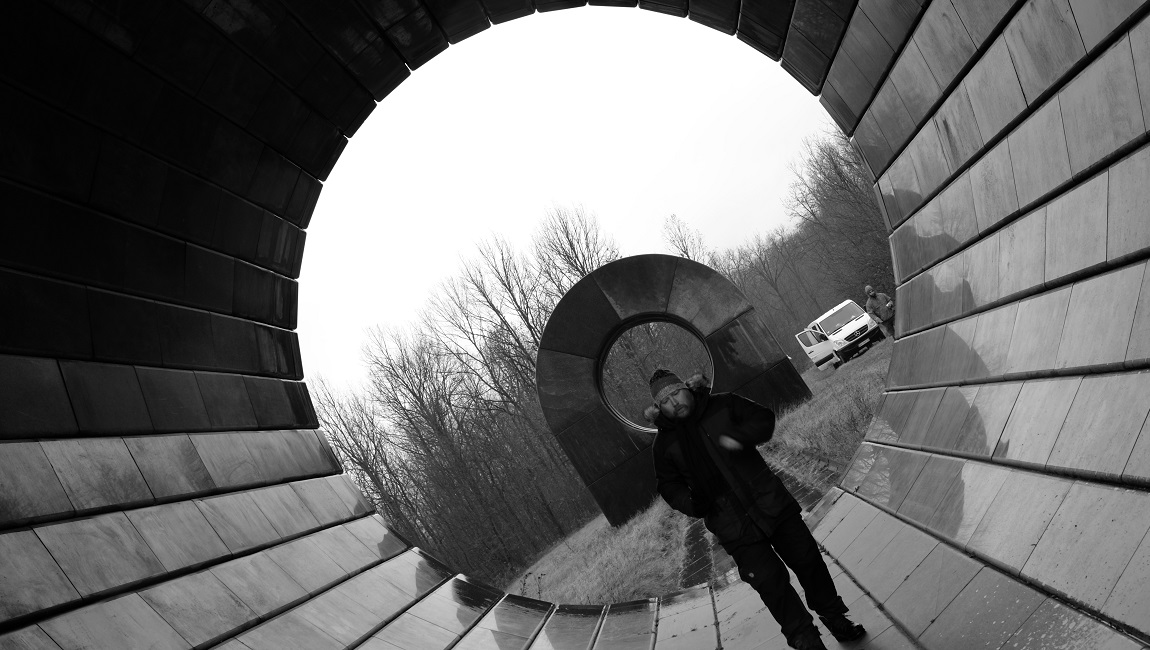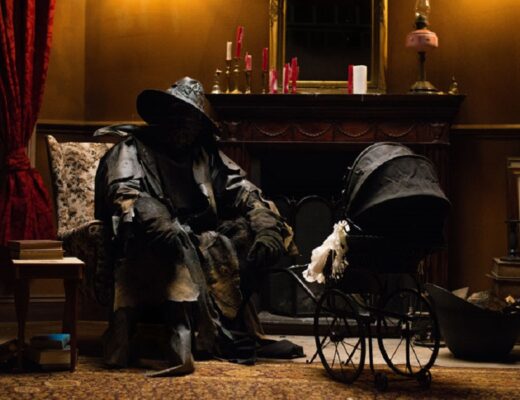She Dies Tomorrow is a fever-dreamy reflection of modern existential anxieties.
Rodney Ascher’s 2015 documentary The Nightmare follows multiple subjects that have experienced bouts of sleep paralysis, a real phenomenon involving the sensation of being lucid but with an inability to speak or move. It’s not a particularly frightening film, despite its best efforts, but there’s one moment that sticks out as truly, deeply unsettling: a young man describes a typical episode, falling asleep and having disturbingly vivid nightmares, convinced that something with piercing red eyes is staring at him. Upon waking, he discovers that the person who was sleeping next to him, someone with no history of sleep paralysis, had exactly the same dream, the implication being that he has somehow infected this person through simple physical proximity, a psychic transferal of horrific imagined trauma. Amy Seimetz’s She Dies Tomorrow fashions from this experience a kind of low-fi, hallucinatory vision of impending apocalypse. Here, thoughts are both dangerous and contagious; in other words, it operates according to the familiar tension of zombie and occult flicks — one touch and you’re done for. But similar to the preferred mode of her first feature, 2012’s Sun Don’t Shine, Seimetz approaches genre here from an oblique angle, using the framework of film noir and science fiction to accommodate a loose structure that she can then nestle into, crafting fractured psychological portraits of people on the fringe. This is genre stripped down to the bone; less a deconstruction than a willing immersion into the hazy anxieties that accompany the unknown.
She Dies Tomorrow begins with the camera peering out from behind doors, as we see a partially obscured man in the throes of some kind of violent breakdown. Seimetz follows this with a series of increasingly disorienting scenes of Amy (Kate Lyn Sheil) pacing about her mostly empty home, pouring herself drinks, and playing the same piece of classical music over and over. Seimetz conjures a strange, hypnotic rhythm, even funereal, as Amy becomes increasingly drunk and soon calls Jane (Jane Adams), who reluctantly comes over to check on her friend. Semeitz parcels out narrative details in fits and starts, but it soon becomes clear that Amy is a recovering alcoholic who has fallen off the wagon, and Jane has clearly dealt with this kind of relapse before. Frustrated, Jane is set to leave when, boldly and with no dithering, Amy declares that she is going to die tomorrow. Jane at first attempts to talk her out of this apparent delusion, before giving up and promising to check back in on her once she sobers up. It’s here that She Dies Tomorrow fans out into a couple different narrative threads. First, Jane becomes ‘infected’ with Amy’s delusion, absolutely convinced that she too is now going to die, and in turn begins spreading this particular psychosis to everyone she meets. Meanwhile, a drunk Amy goes on a journey in the middle of the night to an unknown destination, a sequence intercut with flashbacks that show Amy and her significant other (Kentucker Audley) on a weekend getaway to the desert. The film’s present transpires over the course of roughly 24 hours, and each character seems to embark on his or her own secularized dark night of the soul. Certain as they are of their impending doom, characters say their goodbyes, end relationships, attack each other, engage in patricide, and eventually stumble into a sort of shocked acceptance.
There’s a chapter in Adrian Martin’s essential Mysteries of Cinema (recently released in paperback) titled “The Ever Tested Limit: Cinematic Apparitions.” Surveying a selection of nearly unclassifiable films by such diverse visionaries as Resnais, Roeg, and Lynch, Martin writes of them: “The cinema shuttles back and forth on… corroded rails of subjectivity. Dream-like films certainly, but not ‘dream films’ in any uncomplicated sense, because their journeys are tense and fraught, rather than simply dreamy. The anguish they can sometimes generate comes from this tension between… a scary, shattered world and the splintered consciousness that tries in vain to apprehend and recompose it.” It’s an apt description of She Dies Tomorrow, a film absolutely dedicated to chronicling a “tense and fraught journey.” Seimetz’s visual approach reflects this psychological instability: she favors unsteady close-ups of her actors, emphasizing a shallow depth of field that tends to obscure backgrounds. It lends her compositions a sort of floating sensation, the camera drifting in and out of scenes, obfuscating as much as it elucidates. A few narrative choices also prove instructive: Jane is an artist, and we see her at work in her studio in several scenes, mixing some kind of solution onto glass slides, placing them under a microscope, and then photographing the ensuing scientific reaction. It’s a fitting synecdoche for the film itself: the fixation and determination to observe, probe, and somehow get eyes on what’s unseeable. Parallels abound between Sun Don’t Shine and She Dies Tomorrow — the casting of Sheil and Audley as a couple, a brief cameo by director Simon Wingard as a wierdo interloper, and, of course, a deeply oneiric approach to narrative — and the two form a fascinating diptych, each film committed to investigating a certain modern ennui. She Dies Tomorrow punctuates these concerns with a intentionally ambiguous ending: Amy perched on a (symbolic) precipice, waiting for death. It’s sure to infuriate some viewers, but it’s clear that Seimetz has no interest in closure or finality. Rather, the fascination for her lies in the very possibility of confronting an uncertain future with eyes wide open.







